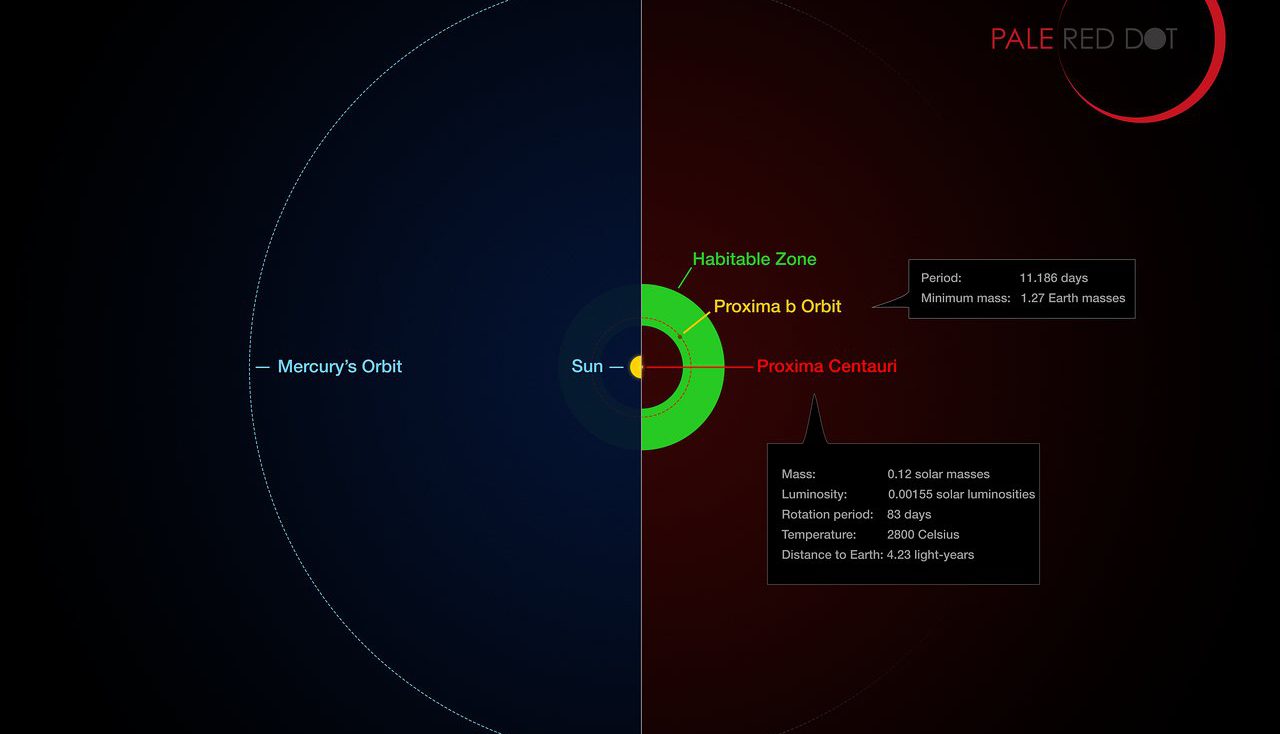Earth-like planet found around our nearest star – Proxima Centauri

A team of astronomers, from the Pale Red Dot campaign, have found definitive evidence of a planet in orbit around the closest star to Earth, besides the Sun. The star is called Proxima Centauri and lies just over 4 light-years from our Solar system. The newly discovered exoplanet is now called Proxima b and has an orbital period of 11.2 days and a temperature suitable for liquid water to exist on its surface. This makes Proxima b the closest exoplanet to us and it may also be the closest possible abode for life outside the Solar System. The observing campaign lasted from mid January to April 2016 and the results have just been published today in Nature magazine.
The parent star named Proxima Centauri is the closest star to Earth apart from the Sun and as it is a red dwarf, it has much lower temperature than the Sun. It lies near to the bright pair of stars Alpha Centauri AB in the constellation of Centaurus.
The Pale Red Dot campaign regularly observed Proxima Centauri from mid-January to April 2016 with an array of telescopes around the world. A team of astronomers led by Guillem Anglada-Escudé, from Queen Mary University of London, was looking in the observed data for the tiny back and forth wobble of the star that would be caused by the gravitational pull of a possible orbiting exo-planet.
The Pale Red Dot data, when combined with earlier observations, revealed the clear signal of a truly exciting result: at times Proxima Centauri is approaching Earth at about 5 km/hr (normal human walking speed) and at times receding at the same speed. This regular pattern of changing radial velocities repeats with a period of 11.2 days. This indicated the presence of an exo-planet with a mass at least 1.3 times that of the Earth, orbiting about 7 million km from the parent star — only 5% of the Earth-Sun distance.

